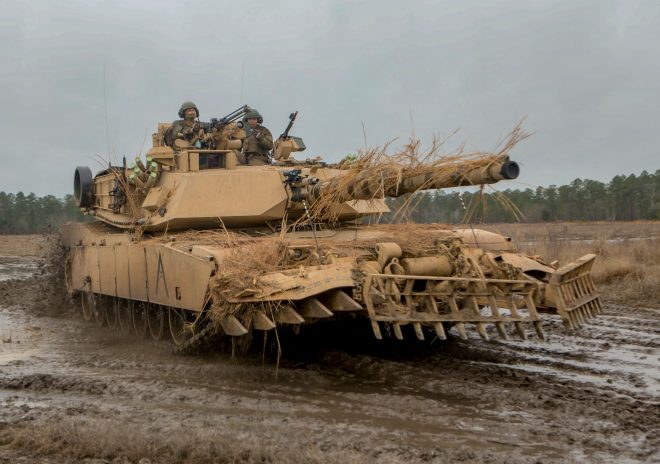Not a Marine either, but spent times in Army units in the late '70s to late '80s, transitioning through M551A1 Sheridans, to M60A1 (RISE Passive), M60A3 (Passive), M60A3 (TTS), M1 IP (105mm gun version). My old unit got M1A1's (120mm gun version) in time for Desert Storm, long after I had DEROS'd. I understand the Marines went straight from M60A1s to M1A1, so they did not experience the incremental tank upgrades.
Technical comments: there was no loss of accuracy going from the 105mm gun to the 120mm gun. The M256 fires rounds that are fin-stabilized, at a higher muzzle velocity with a flatter trajectory, so they are less sensitive to errors in range estimation under combat conditions. The largest factor in accurate gunnery is accurate rangefinders. This happened with the incorporation of the laser rangefinder in the M60A3s and M1s. The mechanical ballistic computer of the M60A1, which basically only calculated superelevation based off the optical rangerfinder, was replaced in M60A3 and M1 with a digital computer, capable of accounting for crosswind, cant, tube droop, target lead sensors, and precision inputs from the laser rangefinder. Although the M60A1 and M60A3 had a notional shoot on the move capability, improvements in turret stabilization systems and suspension components made the M1 really capable of precision gunnery on the move at higher speeds. Finally, the limited night fighting capability of the original M60 (IR searchlight) evolved through image intensification sights to thermal sights in the M60A3 TTS and the M1, giving tanks a 24 hr precision gunnery capability.
The M1 was in development for most of the 70s. The M60A1 (RISE Passive), M60A3 (Passive), M60A3 (TTS) incorporated technology by retrofits and upgrades to the M60A1 turret. Physical limitations made for some less than optimal solutions. The M1 series has surivability features that could not be incorporated into the M60 series. The beauty of the M1 is that new technology was designed from the beginning. The M1A1 is a much better tank.

 news.usni.org
news.usni.org


